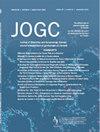社会经济状况与压力性尿失禁主要治疗方法的选择:一项回顾性队列研究。
IF 2.2
Q2 OBSTETRICS & GYNECOLOGY
引用次数: 0
摘要
简介和假设:压力性尿失禁(SUI)影响25%的加拿大妇女。描述社会经济障碍的特征对于宣传和以病人为中心的咨询至关重要。我们的目的是评估社会经济地位与SUI患者主要治疗策略之间的关系。方法:这项回顾性队列研究使用2019-2022年的账单和诊断数据来确定加拿大新斯科舍省一家三级泌尿妇科诊所的所有SUI患者。社会经济地位的估计使用税后邻里收入的五分位数,这些收入来自2021年加拿大人口普查数据和PCCF+ 8A1工具的邮政编码。主要结果是我们省医疗保健计划未涵盖的干预措施的组合:盆底物理治疗、阴道雌激素或子宫托。使用Logistic回归模型来估计邻里收入与患者成本导致的干预措施选择之间的关系。结果:293例患者诊断为SUI,符合入选标准。4.4%的患者选择保守干预,71.7%的患者选择保守干预,17.1%的患者选择手术。来自低收入和高收入社区的患者选择保守干预的几率没有差异(OR 1.33, 95% CI 0.75-2.34)。低收入社区就诊的患者较少。结论:来自低收入和高收入社区的SUI患者选择保守干预的可能性没有差异。然而,来自低收入社区的患者就诊较少。倡导公平获得咨询和治疗可以减少获得咨询和治疗的障碍。本文章由计算机程序翻译,如有差异,请以英文原文为准。
Socioeconomic Status and Choice of Primary Management of Stress Urinary Incontinence: A Retrospective Cohort Study
Objectives
Stress urinary incontinence (SUI) affects 25% of Canadian women. Characterizing socioeconomic barriers is essential for advocacy and patient-centred counselling. Our objective was to estimate the association between socioeconomic status and the primary management strategy among patients presenting for consultation for management of SUI.
Methods
This retrospective cohort study used billing and diagnostic data from 2019 to 2022 to identify all patients with SUI presenting to a tertiary urogynaecology clinic in Nova Scotia, Canada. Socioeconomic status was estimated using after tax neighbourhood income quintiles derived using postal codes from 2021 Canadian census data and the PCCF+ 8A1 tool. The primary outcome was a composite of interventions not covered by our provincial health care plan. Logistic regression models were used to estimate the association between neighbourhood income and choice of patient cost-incurring interventions.
Results
A total of 293 patients had a diagnosis of SUI and met criteria for inclusion: 4.4% chose expectant, 71.7% chose a conservative intervention that incurred patient cost, and 17.1% chose surgery. There was no difference in the odds of choosing a conservative intervention that incurred patient cost between those from low- and high-income neighbourhoods (OR 1.33; 95% CI 0.75–2.34). Fewer patients from low-income neighbourhoods presented for consultation.
Conclusions
There was no difference in the likelihood of choosing a conservative intervention that incurred patient cost among patients with SUI from low- and high-income neighbourhoods. However, fewer patients from low-income neighbourhoods presented for care. Advocacy for equitable access to consultation and treatment may reduce barriers to access.
求助全文
通过发布文献求助,成功后即可免费获取论文全文。
去求助
来源期刊

Journal of obstetrics and gynaecology Canada
OBSTETRICS & GYNECOLOGY-
CiteScore
3.30
自引率
5.60%
发文量
302
审稿时长
32 days
期刊介绍:
Journal of Obstetrics and Gynaecology Canada (JOGC) is Canada"s peer-reviewed journal of obstetrics, gynaecology, and women"s health. Each monthly issue contains original research articles, reviews, case reports, commentaries, and editorials on all aspects of reproductive health. JOGC is the original publication source of evidence-based clinical guidelines, committee opinions, and policy statements that derive from standing or ad hoc committees of the Society of Obstetricians and Gynaecologists of Canada. JOGC is included in the National Library of Medicine"s MEDLINE database, and abstracts from JOGC are accessible on PubMed.
 求助内容:
求助内容: 应助结果提醒方式:
应助结果提醒方式:


